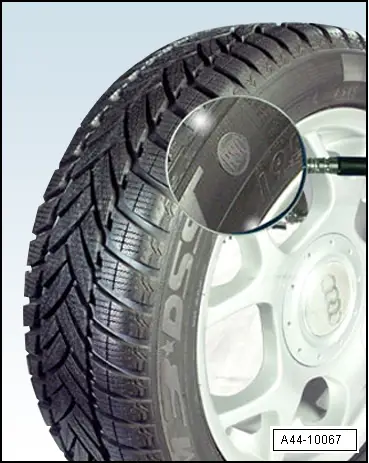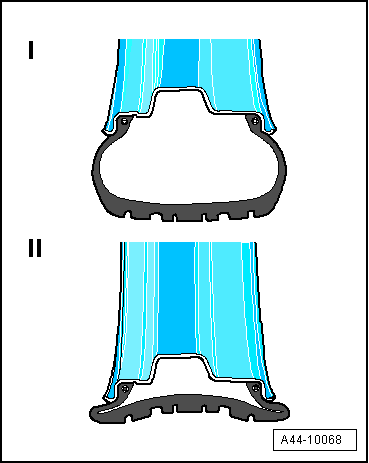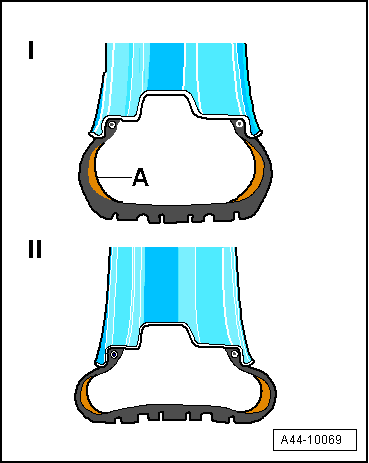| SST tyres are labelled on the sidewall with a special RSC symbol (= Runflat System Component). |
| The markings on the sidewall of a run-flat tyre may differ according to manufacturer. |
| A self supporting tyre has run-flat properties in the event of a pressure loss. In the event of a puncture, the vehicle can be driven to the nearest workshop subject to certain restrictions (see → Owner's Manual. |
| SST tyres can be driven for 50 km at up to 80 km/h even after a complete loss of pressure. |
| Driving style, vehicle speed, road surface, weather conditions, tyre condition and tyre load all affect the distance that can be driven with a puncture. |
| With an SST tyre, it is not necessary to change the wheel immediately even with the tyre completely deflated (i.e. you don't need to stop the vehicle in a dangerous place or in conditions of poor visibility). |
| The braking, steering and driving response are virtually unimpaired even with the tyre completely deflated. |
| You no longer need a spare wheel if SST tyres are fitted. From the customer's point of view, the benefits are savings in space and a lighter vehicle. |
| Standard tyres without run-flat properties |
|
|

|





